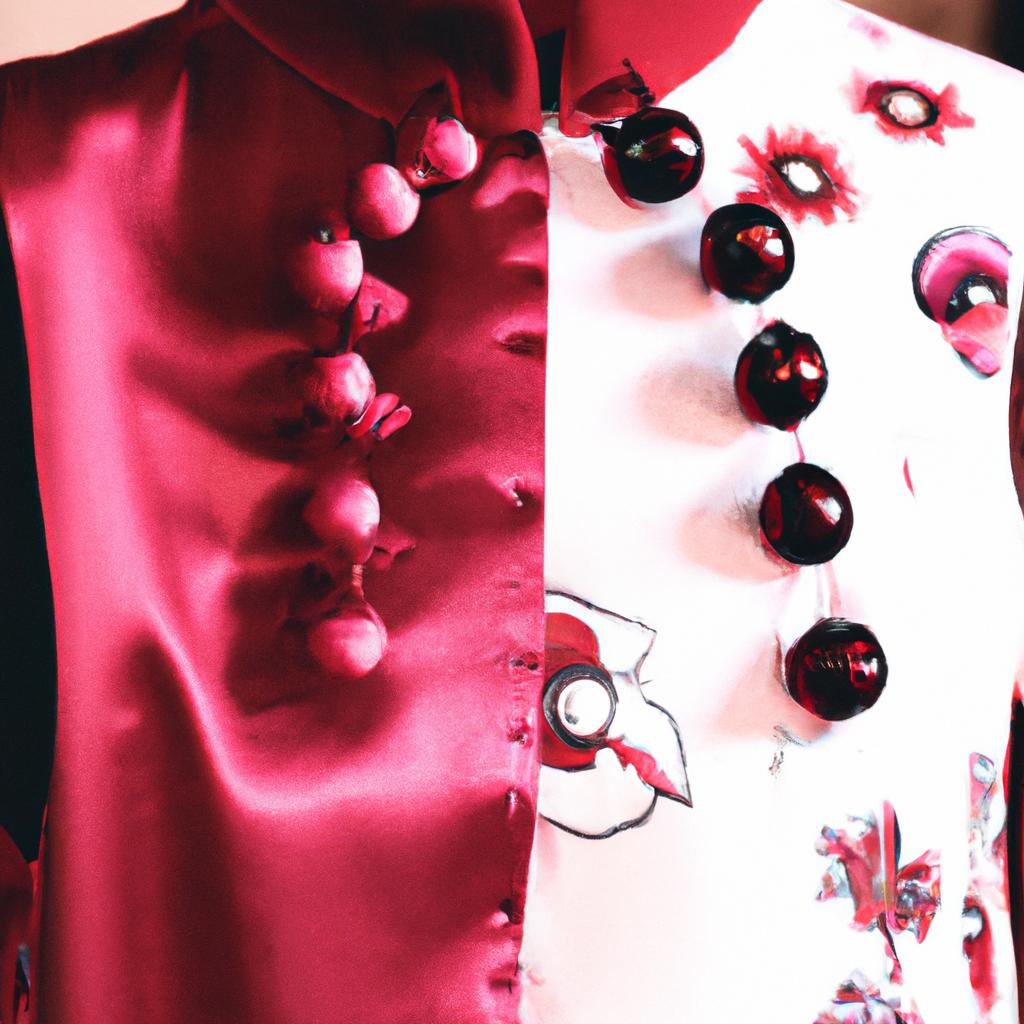
Introduction: Cultural Fashion and Its Global Influences
Everyone has their own unique style, and this is often reflective of the culture we live in and the various influences all around us. Cultural fashion is a term used to refer to the traditional and traditional-inspired garments worn in different parts of the world. This post aims to explore the role of cultural fashion and discuss how global influence has changed the way traditional garments are seen by people in other parts of the world.
Traditional Garments
Traditional garments have been around for centuries and have deep cultural significances and symbolism. They are often seen as a representation of a particular culture, and they tell a story about that culture’s values, beliefs, and traditions.
Different traditional garments are found all over the world in various cultures, each with their own unique features. Some traditional garments are made from intricate hand-woven fabrics, while others are decorated with delicate embroidery or intricate beadwork. Each garment can vary in design and pattern, but all have a distinctive style that has been passed down through the generations.
Traditional garments hold a lot of symbolic meaning and they often represent important aspects of the culture they come from. They can be a symbol of status, wealth, or religious beliefs. They can also be used to signify special occasions or celebrations.
Most traditional garments were designed to serve a specific purpose or to tell a story. For example, some African and Middle Eastern garments were designed to keep the wearer cool in hot climates. In other cultures, such as Native American tribes, traditional garments may be used to identify a person’s tribe or clan.
Regardless of its origins, traditional garments often evoke a sense of pride and nostalgia. They are a reminder of the rich cultural heritage of our ancestors and an essential part of our identity.
Global Influences on Traditional Garments
The globalization of the fashion industry has dramatically changed the way traditional garments are seen and worn by people in different parts of the world. People who have never set foot in a country may copy styles of traditional clothing they see online or on television—and in doing so, these styles become recognized globally. Through the increased access to cultural fashion items, people are able to choose from a variety of styles and looks.
This global influence, however, has had both positive and negative impacts on traditional garments. On one hand, it helps to preserve some traditional apparel and provide an opportunity for people to honor their heritage. On the other hand, it can lead to cultural appropriation and the loss of meaning when the original context is taken away.
Case Study
Traditional garments are a beautiful and important part of many cultures around the world. Unfortunately, they can be subject to changing trends in the fashion industry due to global influences. To demonstrate this, let’s take a look at the example of the traditional kimono from Japan.
Up until a few decades ago, the Japanese kimono was an important part of Japanese culture, usually worn by women for special occasions such as weddings, graduations and other ceremonies. In recent years, however, the traditional kimono has seen a decline in popularity, with younger generations opting for more modern and westernized clothing styles.
The kimono, which was once considered a status symbol, is now in danger of becoming a forgotten piece of traditional Japanese fashion. Many factors have contributed to this change, including globalization, changes in cultural values and the emergence of international fashion trends. As a result, the traditional kimono has been gradually replaced with more modern attire.
This case study serves to remind us how traditional garments and clothing styles can be affected by global influences. It is a reminder that while traditional garments can remain a source of cultural pride, they can still be vulnerable to the ever-changing tides of fashion.
Interviews: Insights from the Experts
In order to gain a deeper insight into cultural fashion, the I Spy Trend team interviewed a number of leading designers, from both established and up-and-coming fashion houses. From their conversations, it was clear that traditional garments have seen a resurgence in popularity, largely thanks to global influences.
The experts agreed that modern designers are becoming increasingly inspired by traditional garments from other cultures; transforming classic silhouettes and fabrics into something new and modern. They explicated further how technology has aided in this process, allowing for faster production times and more creative possibilities.
The most interesting point that emerged from the conversations was that global influence has allowed people to express themselves through the clothing they choose to wear, regardless of where they come from. Traditional garments have been given a new lease on life and is beginning to be seen as a form of expression for many.
Street Style
Street style has been heavily influenced by cultures from all around the world. From shoes to jackets, traditional garments have been adopted into modern fashion trends. These street styles are often inspired by traditional garments and reimagined for a contemporary audience.
Designers around the globe have taken inspiration from texts, arts, and music of different cultures, giving us new and unique fashion combinations. For instance, kente cloth is an African textile, which originates from Ghana. Over time, its vibrant colors and motifs have been adopted by many designers, to create beautiful clothing, jewelry, and accessories.
Today, it is not uncommon to find clothing items that are a combination of multiple cultures, making them stand out and show off individual style. Street style gives people the chance to express themselves through clothing, blending traditional garments with their own personal flair to create something truly unique.
Personalizing Traditional Garments
In today’s society, it is becoming increasingly common to see traditional garments being personalized and worn in a new light. Many people are taking inspiration from traditional garments and adding their own personal touch to make them unique and individual to them. It is important to note that personalizing traditional garments does not take away from their cultural significance; instead, it helps to keep the memory of their culture alive and pass it on to future generations.
People are finding creative and innovative ways of personalizing traditional garments. For example, they might rework the colors, add embroidery, mix and match fabrics, or even create entirely new designs. The possibilities are limitless, as long as the traditional elements of the garment are preserved. This is an exciting way for people to put their own stamp on traditional fashion and be able to express themselves through their clothing.
The act of personalizing traditional garments can also help to form a connection between the wearer and their culture, particularly if they are of a different cultural background. This is an empowering experience for many people as it allows them to show off their heritage and create a unique look for themselves. Personalizing traditional garments also helps to keep the cultural traditions alive by ensuring they remain relevant to modern times.
ISPYTrend’s Opinion
At I Spy Trend, we believe that when it comes to fashion, traditional garments and global influences go hand in hand. While traditional garments are priceless and have immense value, global influences have allowed us to appreciate their significance and have given us the opportunity to share them with the rest of the world.
We have had the chance to talk to a few different designers who have shared their perspectives on this important subject. They discussed the changes that global influence has had, not only on fashion, but also on how traditional garments are seen and used. This has allowed us to further our understanding of traditional garments as well as appreciate their importance and value.
We have also had the opportunity to observe the latest trends in street styles around the world and the various ways people personalize traditional garments to suit their own unique style. This has further enhanced our understanding of how cultures are being merged and interlinked at an increasing rate, leading to a more diverse fashion landscape.
Overall, we believe that the traditional garments are a major part of any culture and global influence has provided us with the platform to share these valuable items with the rest of the world.
Impact of Traditional Garments
Traditional garments can have significant economic, social, and political impacts on societies around the world. From providing employment opportunities to creating a sense of belonging or pride, these impacts can affect people in various ways.
When it comes to economics, traditional garments can provide employment opportunities to those involved in their production. This includes artisans and craftspeople needed to create the garments, as well as those working to market and distribute them. Additionally, the sale of traditional garments can bring in revenue for the people selling them and the countries they are sold in.
On a social level, traditional garments can create a sense of identity and pride for the people wearing them. They can also act as a form of nonverbal communication, allowing people from different demographies to understand each other without language barriers.
Finally, traditional garments can have political implications as well. In some cases, they can signify power and political allegiance. This is particularly true in cultures where elaborate traditional clothing carries connotations of wealth or royalty.
There has been much research conducted on the impact of traditional garments on local and global economies, societies and politics. Through this research, we can gain valuable insights into why traditional garments continue to be popular among certain groups, and how they have shaped our world today.
Concluding Thoughts
In this guide, we explored the concept of cultural fashion, traditional garments, global influences, and their impact. We looked at traditional garments from different cultures and explored how these garments are often changed by global influences. We discussed various case studies that illustrate how traditional garments have been adapted to fit with changing trends. We also spoke about street style and personalization to give a unique perspective on the influence of culture in fashion. Finally, we talked about the economic, social and political impacts traditional garments can have.
This guide has shown how fashion is ever-changing and influenced by culture in various ways. Through this guide, we hope our readers gain a better understanding of cultural fashion and its implications.
Acknowledgement of Sources
Throughout this blog post, we have referred to research studies, interviews with designers, and expert opinions in order to explore the impact of cultural fashion on our modern day world. Therefore, it is important that we give credit and thank all of the sources that have been used.
We would like to thank interviewees, experts, and researchers for taking the time to share their knowledge, views and experiences on the impacts that traditional garments have had on our current culture. We would also like to thank the authors of the research studies that have contributed to the content of this blog post.
Make a Difference with Your Cultural Fashion
The culture behind fashion is more important than ever. With the increasing presence of global influences, traditional garments are being changed to fit in a modernized world. We have the power to support the growth of our cultural fashion, and here’s how.
First, take some time to research traditional garments from different cultures. Learn about the distinctive features, symbolism, and significance of these garments. Then, take a look at how global influence has evolved these garments over time. Consider how you can personally further the globalization of traditional fashion.
Next, find a case study to better understand the impact of global influences on cultural fashion. Look into one particular example of how traditional clothes have been affected by global trends. Get insight from interviews with designers and street style images to see how people are wearing traditional garments today.
Also, don’t forget to make personalization a priority. Personalize traditional garments to fit your own style. Think about the political, economic, and social impact of traditional garments and how you might help to promote all the good they bring.
Finally, take action! Use this guide to learn more about cultural fashion and its global influence. Analyse the impact of cultural fashion in your own country and think of ways to promote the garment’s positive message. Doing so will ensure that traditional garments continue to be a strong part of our culture.
comments: 0







